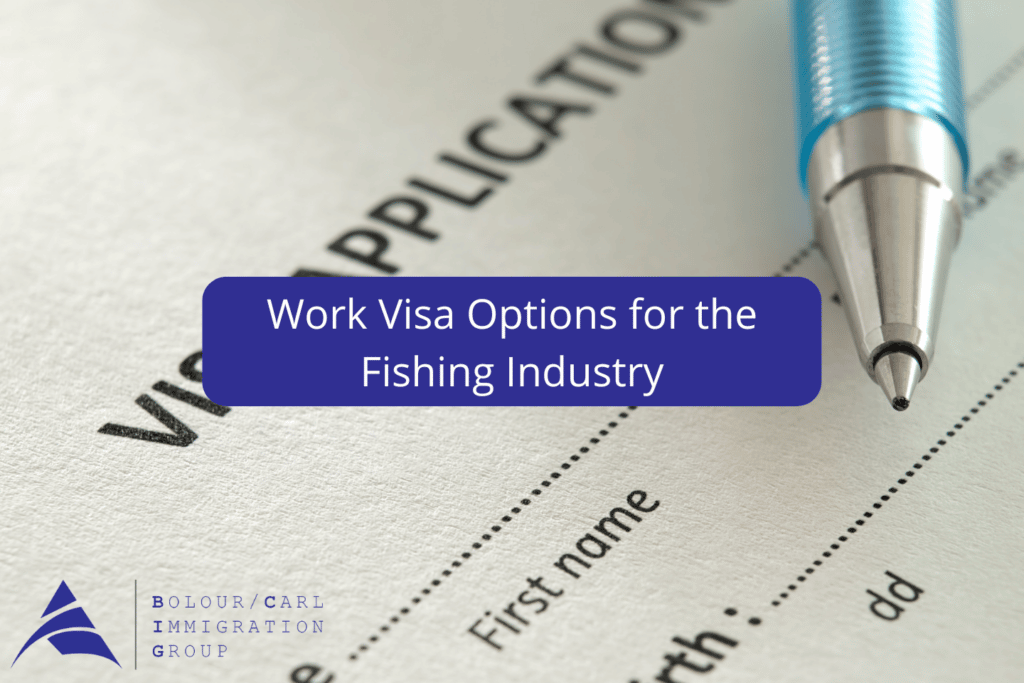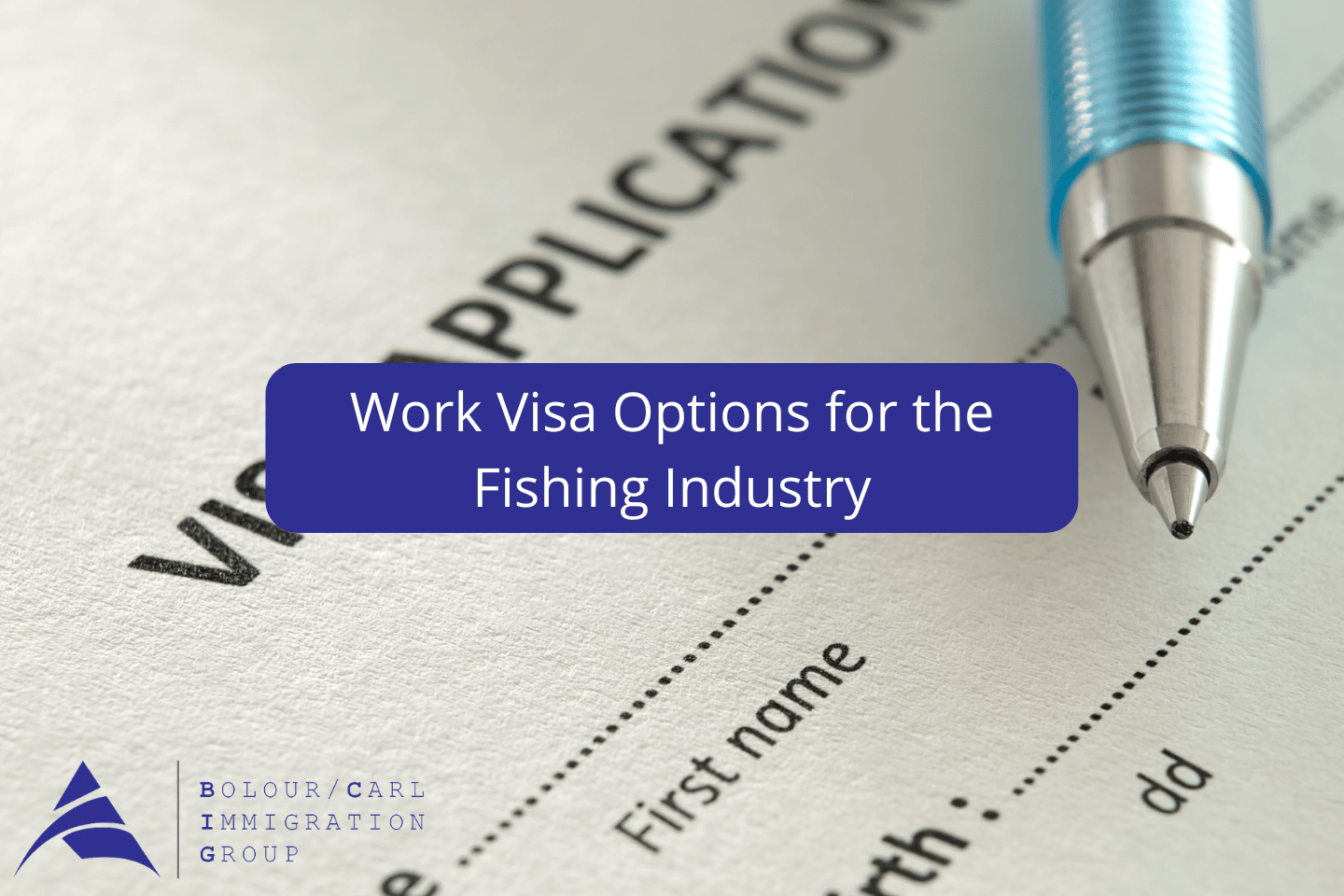
A shortage of workers in the commercial fishing and processing industries has led to increased interest among U.S. employers to temporarily hire workers from other countries. Two popular visa programs, H-2A and H-2B, allow foreign national workers from eligible countries to fill seasonal or other temporary positions that employers are unable to fill domestically. The number of visas that can be issued annually in the H-2B visa program is capped, and as demand outstrips the capped amount, visas are awarded by lottery. The H-2A program, by contrast, is not limited. But the scope of jobs covered under H-2A is very narrow and does not include most fishing industry positions.
H-2A Visa Program
The H-2A visa program is specifically for agricultural workers. It applies to seasonal or other temporary positions, which are typically less than one year, on farms, ranches, nurseries, orchards and other agricultural businesses. While H-2A visas are applicable to positions on fish farms, they do not apply to other types of jobs in the fishing industry.
H-2B Visa Program
The H-2B visa program applies to non-agricultural jobs. It is intended for hard-to-fill seasonal and other temporary positions, typically lasting a year or less, and is popular across many sectors, from hospitality and construction to landscaping and trucking. Many positions in the seafood processing and fishing industries are eligible for the H-2B program. In fact, acute labor shortages in seafood processing have made this a particularly popular industry within the program in recent years.
H-2B Visa Cap
H-2B visas are typically capped at 66,000 annually. Half of these visas are reserved for workers with job start dates during the first half of the federal government’s fiscal year, October 1-March 31, while the other half are reserved for workers who begin working April 1-September 30. Recognizing high demand from U.S. employers for this program, the Department of Homeland Security (DHS) and Department of Labor (DOL) recently made 35,000 additional H-2B visas available for positions beginning before September 30, 2022. These supplemental visas are available only to U.S. businesses that attest they are suffering irreparable harm or will suffer irreparable harm without the ability to employ the requested workers. Of the 35,000 extra visas, 23,500 were earmarked for returning workers who received an H-2B visa or were otherwise granted H-2B status during one of the last three fiscal years. The remaining 11,500 visas were reserved for nationals of El Salvador, Guatemala, Honduras and Haiti, regardless of whether they are returning workers. On May 31, 2022, U.S. Citizenship and Immigration Services (USCIS) announced it had received enough petitions to reach the cap for the 23,500 additional visas for returning workers, but that it was still accepting petitions for H-2B workers from the specified countries.
Workers Exempt from the H-2B Cap
Some seafood workers are not subject to the H-2B cap. Petitions for fish roe processors, fish roe technicians, and supervisors of fish roe processing are exempt, as are current H-2B workers in the United States who wish to extend their stay, change the terms of their employment or change their employer.
Petitioning for H-2A and H-2B Visas
While there are many differences between the H-2A and H-2B programs, the application processes for these programs have many similarities. For both, the U.S. employer or agent must start the process by applying to the DOL for temporary labor certification. The DOL will want to verify that domestic workers will not be harmed by the company hiring foreign national workers. Besides demonstrating that the work is, in fact, temporary, the employer will need to show that it tried and failed to recruit U.S. workers and that hiring foreign nationals will not adversely impact the wages and working conditions of similarly situated U.S. workers.
Once the labor certificate is received, the employer must file Form I-129, Petition for Nonimmigrant Worker with USCIS. The employer may include multiple foreign national workers on the same petition.
After the employer’s petition is approved, foreign national workers will be notified to apply for their visa with the U.S. Department of State (DOS), a process that traditionally included a personal interview at a U.S. embassy or consulate in the worker’s country. However, due to pandemic-related backlogs, DOS has temporarily authorized consular offices to waive in-person interviews for H-2A and H-2B visa candidates who meet certain criteria.
Period of Stay
Both H-2A and H-2B visas are typically approved for the length of the labor certificate and may be extended in one-year increments. An individual can remain in either the H-2A or H-2B status for up to three years.
Bolour/Carl Can Help
Whether you are an employer looking to hire temporary workers or a foreign national worker with a job offer from a U.S. employer, the employment-based visa lawyers at Bolour/Carl can expertly guide you through the complex H-2A or H-2B visa application processes. Contact Bolour/Carl Immigration Group at 323-857-0034 or [email protected].


